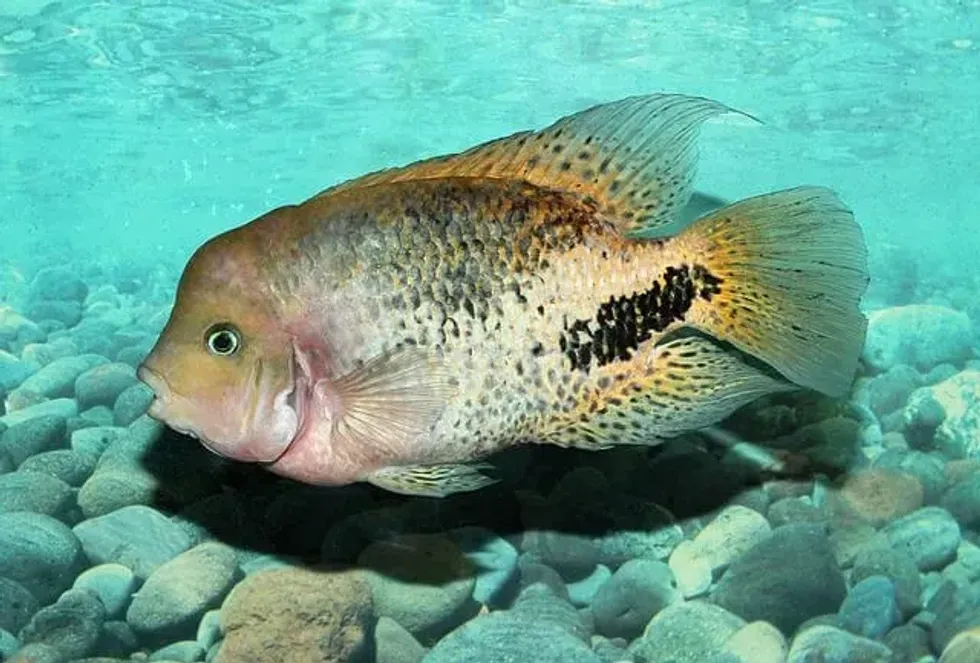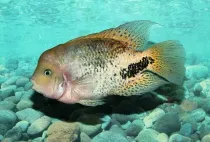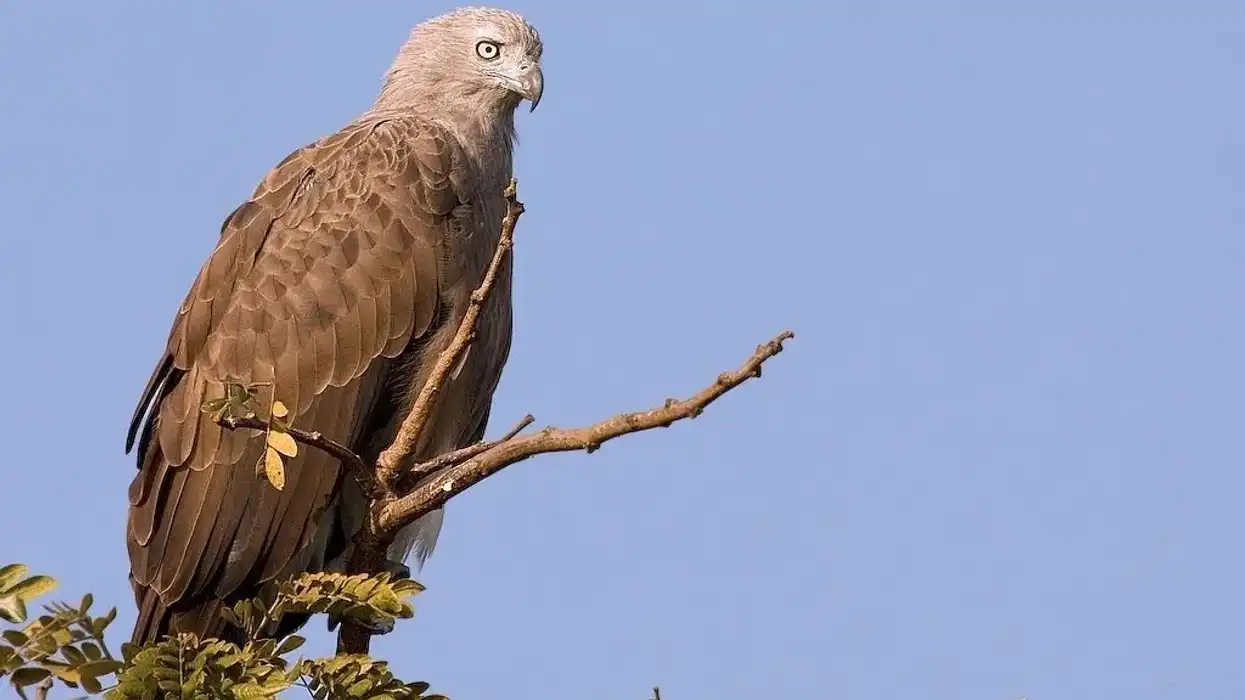Are you fond of learning about yellowfin tuna or similar fishes? If yes, then you should also know about the mrigal carp that is a part of the Indian major carps category.
Even though this fish mainly hails from the streams of India, it can be found in rivers, lakes and ponds of many countries of South Asia. As a leading fish that can be consumed by humans, the mrigal has also made its way to other parts of the world like Russia and the Middle East.
In India, this fish species is extensively farmed in states like West Bengal, where it usually goes by the name of rohu or catla.
However, the original rohu fish is Labeo rohita, which does look similar to this white carp. In ponds and streams, the carp mrigal dwells at the bottom and it likes to remain in shallow water.
Want to know more about this interesting white carp? Keep reading to find more such mrigal fish facts. Also, check out the articles on yellow bullhead and spotted seatrout.
Mrigal Fish Interesting Facts
What type of animal is a mrigal fish?
The mrigal is actually two species of ray-finned fish that are quite close to each other, Cirrhinus cirrhosus and Cirrhinus mrigala. As a member of the carp family, it is considered to be a part of the Indian major carps and is widely used as a food source in different South Asian countries.
What class of animal does a mrigal fish belong to?
As a species of ray-finned fish, the mrigal belongs to the class Actinopterygii. Even the jack fish is part of this class. Both fishes are also part of the subfamily Labeoninae that contains the Labeo rohita or rohu fish. The genus Cirrhinus is also shared by both fishes.
How many mrigal fish are there in the world?
Because the mrigal fish is used in aquaculture and for production of food, it is hard to note the population of this species.
Where does a mrigal fish live?
This fish is found in different areas of South Asian countries. However, the mrigal carp is said to be native to streams of India, at its only wild population is found in the Cauvery River.
Whereas, the Cirrhinus mrigala is found in different South Asian countries like Bangladesh, Pakistan, Sri Lanka, Myanmar, Thailand, and Laos. Due to its huge demand, these fish are also being imported to other countries as human food. We cannot call the mrigal to be endemic to a particular place.
Now, if you visit India, it is easy to spot mrigal fish in different lakes and ponds as this species is grown extensively. However, if you want to watch the fish being farmed, make sure to visit West Bengal.
What is a mrigal fish's habitat?
Both fishes prefer a shallow freshwater environment like streams, rivers and lakes. These fishes like to reside in areas with gravel on the bottom. In the wild, it is unable to breed in confined spaces like ponds, but artificial breeding has led to these being kept in ponds. Often the spaces of aquaculture are quite small and often overpopulated.
Who do mrigal fish live with?
These fishes will often live in schools or groups in a lake or a river. In its natural habitat, you can often find them swimming around in groups during the breeding season.
When it comes to farmed fish, you may find a huge number being raised in ponds or fishing beds. This is mainly due to the huge demand for carp species as food.
How long does a mrigal fish live?
In a natural environment, a mrigal fish can live up to 12 years. However, as it is one of the most farmed fish in India as well as in other South Asian countries like Pakistan and Bangladesh, it is caught when it reaches a good size and the range is usually two years.
How do they reproduce?
This carp species reaches sexual maturity at the age of two years. The egg production capacity of a female often depends on its age, but usually, it can produce a range of around 1-1.5 million eggs every breeding season.
The mrigal carp prefers to remain in shallow water as the female lays eggs at a depth of around 39 in (99 cm). In natural circumstances, the breeding season begins with the entry of the southwest monsoon in South Asia, which is usually between the months of May and September.
However, as a farmed fish, the species often goes through artificial breeding and induced breeding. In a farm, the fry has a survival rate of 30-50%, and if it's successful, the length and weight of this fish can drastically increase in only a few months. The fingerlings are kept in a grow-out system for 10-12 months
What is their conservation status?
Because of the low natural population of Cirrhinus cirrhosus or mrigal carp, it has been classified by the International Union for Conservation of Nature (IUCN) as Vulnerable. However, the mrigal fish (Cirrhinus mrigala) is still thriving in different parts of South Asia, so its classified under the status of Least Concern.
Mrigal Fish Fun Facts
What does a mrigal fish look like?
When it comes to the physical appearance of the mrigal, both species look extremely similar. The mrigal has a bilaterally symmetrical body which is also streamlined.
You cannot find scales on the head of a carp mrigal and it has a blunt snout. It's covered in cycloid scales that have a silvery-gray sheen.
Along with its broad mouth, you can see that the upper lip of this fish is distinct from the lower lip. Three rows of pharyngeal teeth are present in the mouth of mrigal.
It has smaller pectoral fins compared to its head and the anal fin isn't extended to the caudal fin. The fins have a brownish or reddish appearance compared to the rest of its body.
Along with being deeply forked the caudal or tail fin is also homocercal, an outwardly symmetrical tail. As a benthic fish, the carp mrigal has a flattened appearance to its body and head.
 * We've been unable to source an image of a mrigal fish and have used an image of an auratus cichlid instead. If you are able to provide us with a royalty-free image of a mrigal fish, we would be happy to credit you. Please contact us at hello@kidadl.com.
* We've been unable to source an image of a mrigal fish and have used an image of an auratus cichlid instead. If you are able to provide us with a royalty-free image of a mrigal fish, we would be happy to credit you. Please contact us at hello@kidadl.com.
How cute are they?
Well, these fishes aren't as cute as a salmon, but this fish does look quite pretty.
How do they communicate?
We are yet to know a lot about the ways of communication that is used in the world of fishes. But, as it's a carp we can assume that tactile and auditory communication is used by the mrigal.
Moreover, it has also been found that carps follow a lateral line of communication, helping the fish to express itself with fellow members as well as to assess the environment. It is also assumed that carps grind their teeth to communicate with each other especially while feeding.
How big is a mrigal fish?
The average body length value of the mrigala is around 3.3 ft (1 m). In comparison, the average body length of redtail catfish is around 3.5–4.5 ft (1–1.3 m).
How fast can a mrigal fish swim?
We don't have any information about the swimming speed of the mrigala fish, but as it's a bottom dwelling fish, the mrigala is usually slower than other species.
How much does a mrigal fish weigh?
The weight of the mrigala varies according to the production, but the average body weight value can be within 2.2-28 lb (1-12.7 kg).
What are the male and female names of the species?
There are no distinct names for the males and females of this species.
What would you call a baby mrigal fish?
A baby mrigal fish is called a fry or a hatchling. The technical term used for the production of this fish is fingerlings.
What do they eat?
The mrigal carp is considered a benthopelagic as well as a potamodromous plankton feeder. It also feeds on algae found near the bottom surface of its environment.
When other foods aren't available, it usually feeds on decayed plants. When kept in ponds for aquaculture or carp polyculture, these fishes are mainly fed rice bran, mustard oil cake, and wheat bran to increase production and the food also helps to increase its weight.
Are they dangerous?
No, this is not a dangerous carp species. In fact, the mrigal carp is one of the three Indian major carps that are used as human food. It is a good, healthy fish because of its protein and fat content which can help to maintain your heart's health.
Would they make a good pet?
Even though these fishes from the carp family may not be the best species to keep as pets, production of these fishes as food is quite common. Aquaculture and carp polyculture system is used in production of these fishes where ponds are used to contain and breeding the species.
Did you know...
As the mrigal carp (Cirrhinus cirrhosus) is a bottom-dwelling fish, the best way to catch or harvest it is by using a dragnet. It's a little difficult to harvest this fish, so farmers are often forced to drain a whole pond to make the process easier.
One of the problems raised about rearing this Indian major carp is the sustainability of fishing. Overuse of antibiotics or fertilizers in the ponds can lead to damaged ecosystems and also lower the nutritional value of these fishes.
Moreover, even though this is a herbivorous species, many farmers use proteinaceous feeds to make a profit by making the breed bigger.
The mrigal carp (Cirrhinus cirrhosus) is widely consumed in South Asia, and people often like to buy it fresh and cook it either in form of a curry or consume it friend.
What is the scientific name of mrigal fish?
The scientific name of the mrigal carp is Cirrhinus cirrhosus. However, there is another mrigal fish that has the scientific name of Cirrhinus mrigala. Even though this fishes may appear similar, it is classified as a different species.
Is mrigal a freshwater fish?
Yes, the mrigal or white carp is a freshwater fish that is native to India and it lives in many streams and rivers. The other mrigal fish (Cirrhinus mrigala) is also found in freshwater rivers and streams in different Asian countries including India, Pakistan, Sri Lanka, and Bangladesh.
Here at Kidadl, we have carefully created lots of interesting family-friendly animal facts for everyone to discover! For more relatable content, check out these ani bird facts and vulture facts for kids.
You can even occupy yourself at home by coloring in one of our free printable kingfisher coloring pages.
Second image by Przemysław Malkowski
* We've been unable to source an image of a mrigal fish and have used an image of a cichlid instead. If you are able to provide us with a royalty-free image of a mrigal fish, we would be happy to credit you. Please contact us at hello@kidadl.com.




 * We've been unable to source an image of a mrigal fish and have used an image of an auratus cichlid instead. If you are able to provide us with a royalty-free image of a mrigal fish, we would be happy to credit you. Please contact us at hello@kidadl.com.
* We've been unable to source an image of a mrigal fish and have used an image of an auratus cichlid instead. If you are able to provide us with a royalty-free image of a mrigal fish, we would be happy to credit you. Please contact us at hello@kidadl.com.




